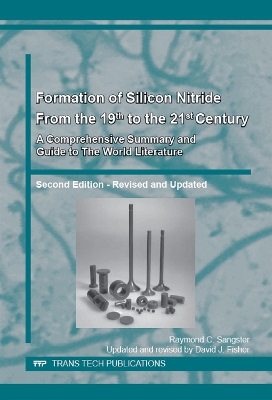The elements: Si, N, O, C and H, have strong chemical affinities for one another. Under the correct conditions, Si-N bonding will occur in almost any Si-N-(O/C/H), and many related, reaction systems; although Si-O and Si-C are formidable competitors to Si-N. The most favored Si-N compound is stoichiometric Si3N4. It comes in three common varieties. How they interrelate, how one finds them and (above all ) how one makes them - and how sometimes they just happen to form - are the subjects of this book, with due attention being paid to closely related matters. This revised second edition summarizes and integrates what is recorded in the world literature from 1857through 2014 as being known about the formation of silicon nitride - Si3N4 - and itsclose relatives. The book is the key to all that has been learned, over the past 150 years, about how silicon nitride comes to exist: in nature, in the laboratory or in the factory and in many reaction systems; together with how it is used in ceramics, electronic films, optical coatings and many other ways (including an introduction to closely related substances). It will aid the researcher in designing new projects, the supervisor in briefing new employees, the salesman in working with new customers, the patent attorney in assessing patents and the professor in designing graduate course assignments. This comprehensive reference gathers information published on the chemistry of silicon nitride and its products, uses, and markets. Separate chapters overview the manufacture of silicon nitride powder, the production of silicon nitride ceramics via the reaction bonding process, the intrinsic reactions between crystalline silicon surfaces and N2 for silicon wafers, nitridation of Si-O based materials, and chemical vapor deposition of Si-H compounds.
- ISBN13 9783038359944
- Publish Date 6 May 2015
- Publish Status Active
- Publish Country CH
- Imprint Trans Tech Publications Ltd
- Format Paperback
- Pages 1016
- Language English
- URL https://scientific.net
